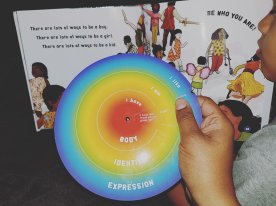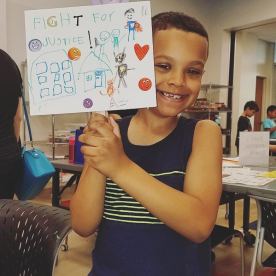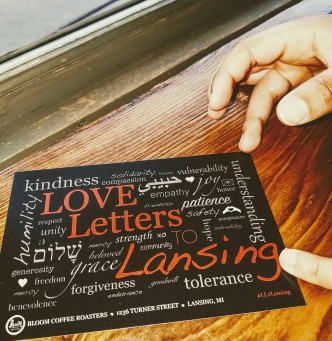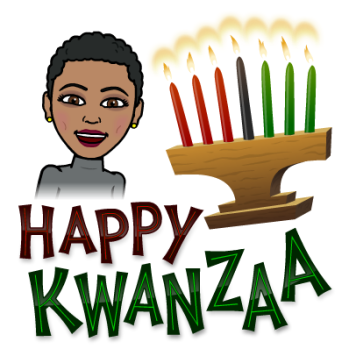Blessed is light in the world;
Blessed is the light in humanity; Blessed is the light of Hanukkah.
— Humanistic Hanukkah Blessing
yesterday, stirred by instinct, i decided that we’d create our own hanukiah. (lemme take a sacred pause here to emphasize how Spirit truly moves through us because i had not even checked the calendar to see when Hanukkah fell this month!) only now as i write am i connecting this intuitively-inspired action to heart-seeds nourished by Sangha’s reflection on what we have inherited, the quality of how we give + receive, and what we transmit.
🕯 what have i inherited? the soul-deep call to explore the spiritual legacy of my jewish ancestors dora, gottlieb + mary roth.
🕯 how do i give + receive? by trusting curiosity + call to move beyond ideologies + orthodoxies about how to celebrate/worship. by telling new stories + making new practices + memories.
🕯 what do i transmit + pass on? imagination, creativity + openness to be expansive with how we live out the yearnings of our spiritual hearts, which are compelled toward what feels nourishing.
so on tuesday night, we took turns re-reading Hanukkah Moon by Deborah Da Costa + inviting the bell. i recited a prayer before K lit the first candles. then the kiddos ate brownies to sweeten the day.
first light of hanukkah:
the light of reason that teaches us the difference between right and wrong.(*)
— Marilyn Rowens, Secular Humanistic Judaism

(*) dualistic language that I always expand to “skillful” and “unskillful” to acknowledge the range of context and conditions as well as the process of learning, stretching, deepening, revising, evolving as we grow through, test out and experience actions that create suffering/harm and those that cultivate freedom/healing from suffering/harm.

#BodhicittaBookshelf
📚 Grandma’s Gift by Eric Velasquez
📚 Hanukkah Moon by Deborah Da Costa
📚 Jackie’s Gift: A True Story of Christmas, Hanukkah, and Jackie Robinson
by Sharon Robinson
📚 Queen of the Hanukkah Dosas by Pamela Ehrenberg
the second light of hanukkah:
the light of self-esteem that inspires us to believe in ourselves.
my little ray of light just might have been most geeked about learning how to use a lighter. these mudras were all him, y’all!
here i paused + cradled my heart for the devastating loss of young lives to suicide triggered by bullying. as much as i want to try to understand the unimaginable, i can hardly read beyond these headlines.
that these babies are suffering so deeply that voices of cruelty drown out voices of love is unacceptable. we must protect these babies — those who have been taught to harm + those who are the targets of harm — at all costs.
the third light of hanukkah:
the light of courage that gives us the strength to stand up for our beliefs.

king k + his “flamethrower,” lighting the 3rd candle last night!
[king k + his “flamethrower,” lighting the 3rd candle last night!]
afterward, we talked about what courage looks like + read about courageous activist + Nobel Peace winner, Malala Yousafzai.
courage also looks like untethering ourselves from what no longer serves us — thoughts, values, beliefs, behaviors, practices, rituals, — particularly, if they are “inherited” or “borrowed” + not resonant with who we are or aspire to be.
#BodhicittaBookshelf
Malala: Activist for Girls’ Education by Raphaële Frier
the fourth light of hanukkah:
the light of freedom that reminds us to take responsibility for ourselves.
as we reflected on freedom, i was instantly transported back to Salus Center’s Whose Streets? workshop last saturday + heard the echoes of Dr. Koach Baruch Frazier declaring, “we have a duty to know that we are free!”
so what makes us feel free?
for my 7-year old: not having homework! 🤸🏾
for me, i told him, one of the many things that affirms my sense of freedom is being my own boss so that i can cultivate a skillful livelihood that enables me to stay aligned in Spirit while supporting others in being whole + free.
we read about Ida B. Wells who was born into slavery, emancipated as a young child, then became a celebrated journalist, crusader against lynching + a voice for justice.
#BodhicittaBookshelf
Yours for Justice, Ida B. Wells: The Daring Life of a Crusading Journalist by Philip Dray
the fifth light of hanukkah:
the light of love that enables us to care for those in need.


we celebrated love…the binding energy that defuses t(w)een-angsty squabbles + sustains sugar-fueled cousins + siblings through gramma’s holiday slumber party!
the sixth light of hanukkah:
the light of loyalty that helps us keep our promises to those who depend on us.

[jedi vibes on this 6th night of reflection under the new moon (rosh chodesh). 🌑]
on this night we contemplated models of loyalty, dependability + trustworthiness, which include superheroes, trollhunters + dragonriders…and, in real life, parents who always got ya back!
the seventh light of hanukkah:
the light of generosity that encourages us give even when we do not receive.

we talked about the many ways we can practice generosity — like giving your cousin most of your goldfish. being patient, kind + helpful. spending time with those you care about. listening well. having a big heart. 💖
the eighth light of hanukkah:
the light of hope that leads us to a vision of a better world.

k has thoroughly enjoyed his official role as “keeper of the flame” + surprised me by suggesting we add the buddha statue + goddess card to create this tableau.
(i’m sure his eye for #miseenscene has been influenced in some small way by all the episodes of #fixerupper he watches with his dad!)
on this very last night we celebrated hope + its connection to each of the seven virtues that came before.
hope can energize our capacity to embody + experience generosity, loyalty, love, freedom, courage, self-esteem, reason/wisdom. and each of these qualities can strengthen our hope.
The Eight Lights of Hannukah by Marilyn Rowens, Secular Humanistic Judaism
Spread Love + Share this:






































































